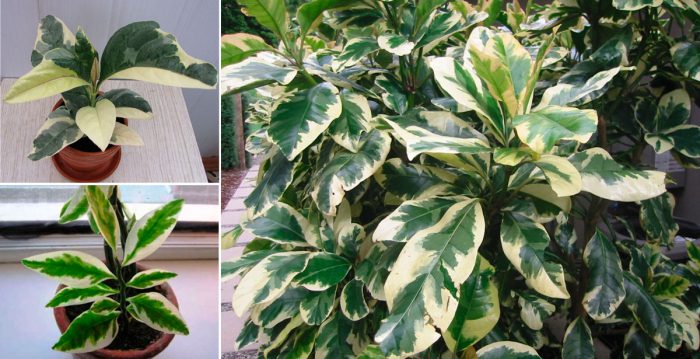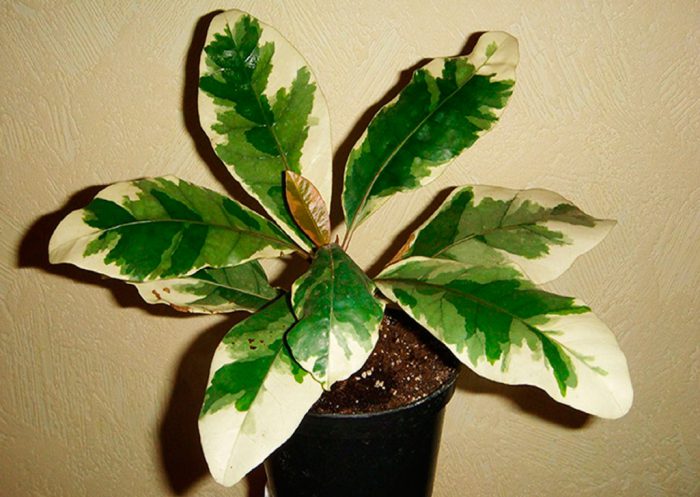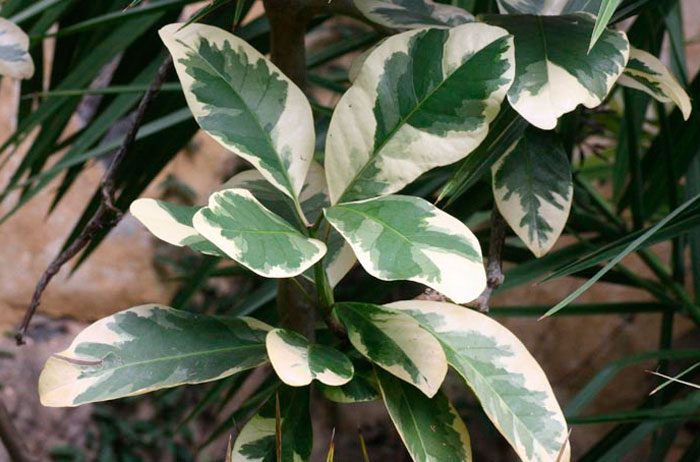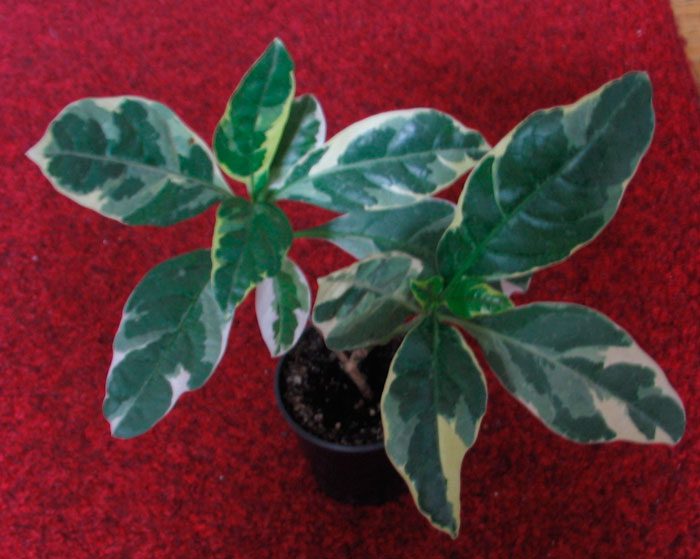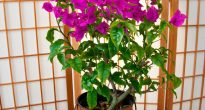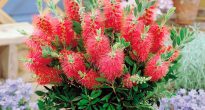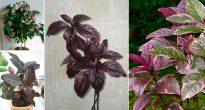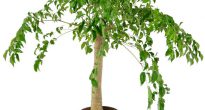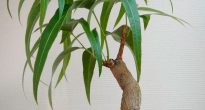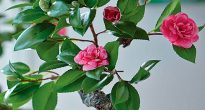Genus pyzonia is directly related to the Nyctaginaceae family. It brings together nearly 50 species of evergreen shrubs and trees. In nature, they can be found in the subtropical and tropical zones of Australia, America, as well as on the islands of the South Pacific Ocean and Hawaii.
These numerous species have one characteristic that sets them apart. And these are thin elongated fruits, on the surface of which there is a layer of very sticky substance. That is why various insects and even birds of a small size stick to these fruits. Thanks to this feature, this plant is popularly nicknamed the "bird-catcher".
At home, only one species is cultivated - the umbrella pisonia (Pisonia umbellifera). It is a short tree that branches quite strongly. In nature, its height can reach 5 meters. Opposite short-petiolate leaves can be up to 20 centimeters long and have a smooth, shiny surface. Simple leaves have an oval-oblong shape and slightly wavy edges. In nature, they are colored green, but at home, variegated varieties with large whitish or yellow spots are most popular.
Small whitish green flowers have a slightly sweet aroma. They are collected in rather large loose apical inflorescences in the shape of a ball or umbrella. At the end of flowering, elongated pod-shaped fruits appear. They are very similar to spread fingers, as they are located almost vertically, and their tips are directed upward.
In an apartment, this plant can grow up to 1.5 meters, but at the same time it is slow-growing.
Content
Pizonia care at home
In order for pizonia to grow and develop normally, you need to know how to properly care for it.
Illumination
Needs bright, but diffused lighting. Shading is required from direct sunlight. The most suitable for placement is an east or west orientation.
Forms with variegated leaves especially need bright lighting, otherwise the pattern may fade.
Temperature regime
It does not tolerate heat in summer. The optimum temperature for this plant during this period is 18-20 degrees. In winter, he has a dormant period, and the temperature in the room should be slightly lowered (16-17 degrees).It reacts negatively to drafts, in this regard, one must be very careful when airing the room.
How to water
Water regularly and in moderation. Watering is carried out after the top layer of the substrate has dried. In no case should the soil be allowed to dry out. In winter, you can water a little less, but you must make sure that the foliage does not become lethargic.
For irrigation, exclusively settled water is used, which does not contain chlorine.
Humidity
This plant does not require high humidity. It feels quite comfortable in rooms with fairly dry air. However, do not forget to regularly remove accumulated dust from the foliage. To do this, you can use a sponge moistened with clean water or a warm shower (make sure that no water gets into the pot).
Pruning
Since this is a slow-growing plant that branches heavily in itself, you do not need to prune it. In very young plants, you can pinch the tips of the shoots for the density of the crown.
Earth mixture
Suitable soil should be loose, rich in nutrients, water and air permeable, slightly acidic or neutral. In a specialty store, you can buy a universal soil, but you will need to add any baking powder, for example, vermiculite or perlite, to it. You can also prepare the soil mixture with your own hands. To do this, it is necessary to combine sod, humus, leaf and peat soil, as well as coarse sand, taken in a ratio of 1: 1: 2: 1: 1. Do not forget about a good drainage layer, for the creation of which pebbles, expanded clay or clay shards are suitable.
Fertilizer
Fertilize during the period of intensive growth 2 times a month. To do this, use a liquid complex fertilizer for indoor plants. Variegated forms need special fertilizers.
In winter, fertilizers cannot be applied to the soil.
Transplant features
Young plants need an annual transplant, and you need to take a pot slightly larger than the previous one. Adult specimens undergo this procedure when necessary, for example, if the root system does not fit into the pot. It should be remembered that the roots of pyzonia grow extremely quickly and strongly.
Reproduction methods
This plant can be propagated by semi-lignified stem cuttings. This procedure is carried out in the summer. For this, a cutting is cut, on which 3 internodes must be present. They take root long and badly. To increase the chances, the cutting should be treated with a preparation that stimulates root growth before planting, and bottom heating is also required.
Diseases and pests
Can settle spider mites, mealybugs, scabbards or thrips... At the first signs of damage, the plant should be given a hot shower, but before that, pests such as worms and scale insects must be removed with a cotton pad dipped in a liquid containing alcohol. If it was not possible to get rid of the pests, then use special chemicals.
Pizonia can get sick with powdery mildew or gray rot. Powdery mildew must be dealt with with a solution of foundationol (or another agent of a similar action), and with gray mold - with a fungicide.

